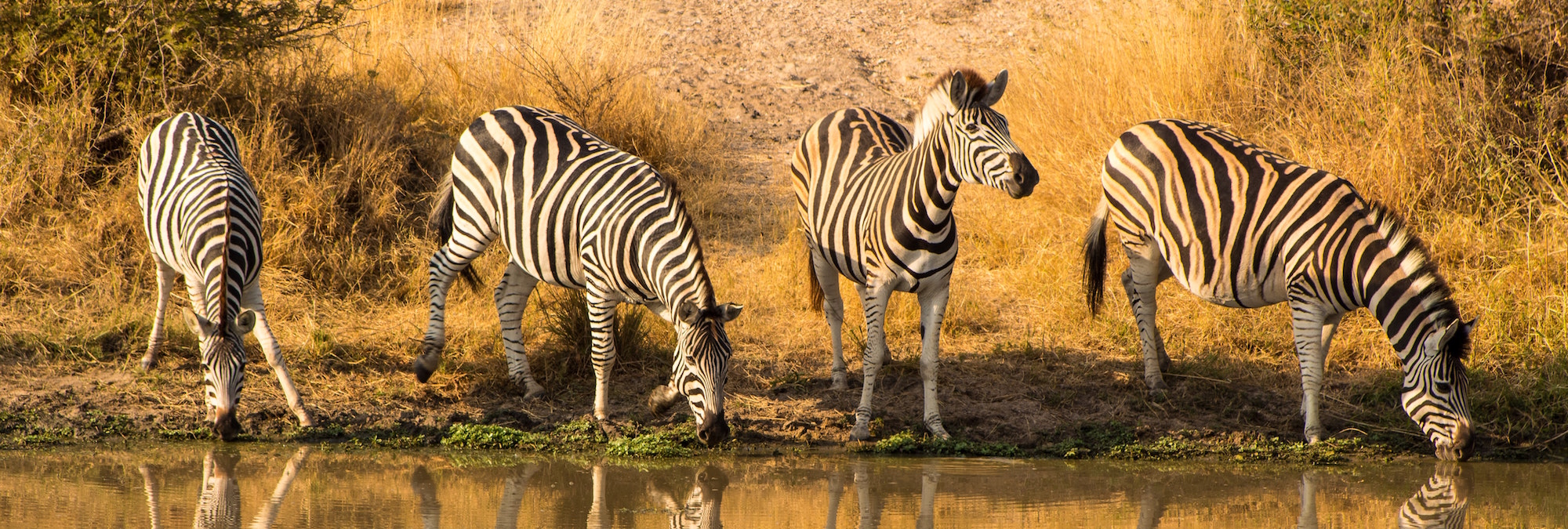Kruger National Park Travel Guide
The Kruger National Park is South Africa's oldest, largest, and best-known wildlife conservation area, and one of the world's premier wildlife-watching destinations. Visitors have an excellent chance of seeing the Big Five (lion, elephant, leopard, buffalo, and rhino) among the enormous variety of wildlife, which includes over 140 species of mammals, 500 species of birds, and numerous reptiles and amphibians.
The park had its beginnings in 1898, when President Paul Kruger established a protected area for wildlife after hunters came close to wiping out the rich game of the region. The South African War (1899 to 1902) stopped further progress until the development of the Sabie Game Reserve by the British, which later expanded into today's Kruger Park.
The park was opened to visitors in 1927, and at present stretches for 236 miles (350km) from the Crocodile River in the south up to the Limpopo River, and is about 40 miles (65km) wide, making it roughly the size of Israel.
Situated on South Africa's northeastern border, Kruger is a sensational destination for international tourists, and is visited by close to a million local and international tourists every year. These tourists are attracted to the different safari options as well as the park's excellent range of visitor facilities and choice of accommodation, from luxurious game lodges to cottages and camping. The park is criss-crossed by over a thousand miles of roads and offers excellent opportunities for self-drive safaris as well as guided drives.
Bush walks with armed and experienced rangers offer a more thrilling safari option where animals such as lion and elephant are tracked through the bush on foot. Visitors may only traverse the park between sunrise and sunset. When darkness descends it is best to be safe in a fenced rest camp. It is possible to take night drives with professional game rangers from the different camps though.
The park has other restrictions that must be adhered to, such as a total ban on pets and firearms, and strict regulations on where visitors may get out of their cars. Visitors should also be aware that Kruger, unlike most of South Africa, is a malaria zone.
This vast sanctuary is a must-see for every visitor to the country. The south is teeming with wildlife and as a result is the most popular area, while the remote northern region is little visited by game or people, but provides some of the best birding opportunities in southern Africa as well as an abundance of historic Iron Age and bushmen (San) sites. Rivers interrupt the extensive grassy plains towards the centre of the park, and the region provides an excellent setting for predators and birdlife.
Kruger's subtropical climate means hot, wet summers and warm, dry winters. Summer temperatures between October and March can climb to 104F (40C), while daytime winter temperatures from June to August are much more pleasant at around 79F (26C), but nights are cold. The best time for game viewing is winter, when wildlife is easier to spot.



